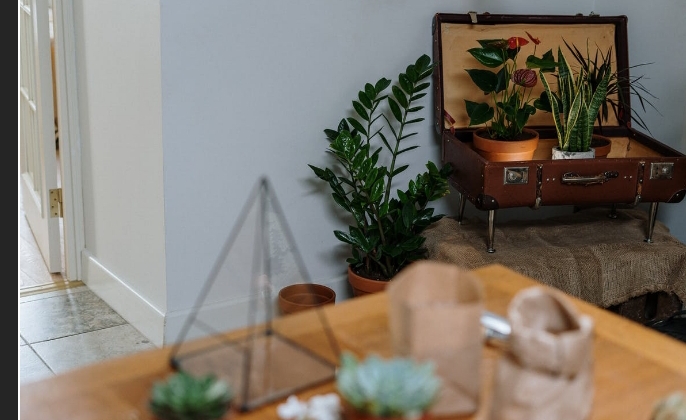Personal Improvement
7 Ways to Make Your House Greener

Last Updated on July 31, 2024 by Joshua Isibor
Nearly a decade ago, contributing to environmental protection typically meant separating plastic from paper in your bin. Additionally, it meant that you had to buy organic vegetables and bring them home in a green paper bag. Today, however, there are many more things you can do to make your home green or environmentally friendly, thanks to environmental concerns being raised in the news to create awareness about global warming, increasing energy prices, and more.
Green living also sparks a discussion about the few natural resources still available. So, to save our world, it means making certain lifestyle adjustments. These adjustments and other eco-friendly decisions will ultimately benefit you without breaking the bank.
Expert on sustainable living Joanna Yarrow explains that every action a person takes has an effect on the globe. Small adjustments to our everyday schedules and activities will allow us to protect our planet without significantly lengthening our lists of things to accomplish. With that in mind, here are some ways to make your home more “green” and environmentally friendly:
1. Purchase Energy Start-Rates Home Appliances and Products
Approximately 70% of all home appliances and products are also available in environmentally friendly and energy-efficient models. So, consider replacing your outdated equipment and products with energy-efficient ones if you want to protect the long-term health of your wallet and make your home “greener.”
For instance, you can swap out your old tantalum bulbs for energy star-rated CFL or LED bulbs. These are typically more energy-efficient and are longer-lasting than traditional bulbs.
2. Install Energy Efficient Windows
Energy-efficient replacement windows are ideal for those who want to live more sustainably. For instance, installing double or triple-glazed windows can significantly reduce your heating costs. Not only would this save you money, but it will also cut down on heat loss. These energy-efficient windows build a barrier that keeps your house warm and insulates it.
That said, recycled timber is better if you reside in a rustic or antique home. So, whenever possible, select low-emissivity window glass. It can cut your heating and cooling costs by almost half.
3. Install Solar Panels
If you switch the power source for your home to solar energy, you might find that on days when it’s really humid, your air conditioner works flawlessly without putting too much burden on your electricity bill. Today’s solar panels can convert up to 20% of sunlight into useful electricity. In fact, compared to their vintage older solar energy tech, they are more effective and attractive.
Additionally, adding solar panels could increase the value of your house by about $12,000 when you decide to sell it. Lastly, if you live in America, tax credits will cover about 30% of the cost of installing solar panels. So, if these benefits don’t tempt you to install solar panels, we don’t know what will!
4. Purchase a Tankless Water Heater
You are probably familiar with a water heater already. It is located in the farthest corner of your basement or garage and gives your house hot water 365 days a year. However, did you know that your outdated water heater is a chronic energy waster? It’s likely to use more gas or electricity than usual, especially if you are still running a model your grandparents used. For instance, an electric water heater will cycle on and off more frequently to maintain the temperature you want, which will cause your electricity bill to skyrocket in the long term.
Old water heaters can also rust internally, which may degrade the quality of the water. Therefore, installing a new tankless water heater would be a smart option. These water heaters are extremely energy efficient as they only switch on when you want them to.
5. Use Green Cleaning Products
Cleaning supplies containing chemicals are terrible for the environment and your health. For instance, when you clean your bathroom with a cleaning product containing a chemical base, you wash these chemicals into the water supply. Additionally, purifying and recycling the tainted water requires extra energy from the city’s purification facility.
Instead, go for natural cleaning products like citric acid, soda bicarbonate, or vinegar and play your part in making your home greener. These substitutes are less expensive and won’t affect the inhabitants of your home or the environment.
6. Switch Off Home Appliances You Don’t Use Frequently
In the end, eco-friendly living involves more than just switching out your inefficient light bulbs for new ones. As mentioned earlier, making wise choices regarding the appliances in your home is another important aspect.
For instance, you might have an old dishwasher plugged into an electrical outlet in your basement. Since it is just sitting there collecting dust and increasing your electricity bill, it might be time to unplug it.
However, you shouldn’t stop there. There is a high probability that someone will leave the lights on unnecessarily, like in the morning. That said, running after people and asking them to turn the lights off when the rises can be quite stupid.
This is where a better option would be to install motion sensor-controlled lighting inside your house. These lights will only turn on when the sensor detects someone has walked the room. Furthermore, installing automatic timers on all light bulbs is another option. These work on a timer-based switch. You only have to set the switch-off time to turn them off, and the automatic switch will do the rest. The possibilities are endless!
7. Properly Insulate Your House
Installing insulation inside your house is one of the best ways to make it more environmentally friendly. Doing so will ensure you use the least energy possible to stay warm during the winter. After all, if your home is adequately insulated, you won’t need to switch on your heating system continuously to keep yourself warm.
That said, you should start off by insulating your roof and walls first. As stated earlier, double or triple-glazed windows will also be a great option because they will lessen the amount of heat escaping from your house. Lastly, if your house has hardwood flooring, you might want to cover it with mats and rugs throughout the winter to keep the floors warm.
The Final Words
Instead of carrying out the upgrades yourself, find a reputable contractor who is knowledgeable about the most recent eco-friendly, green home improvement techniques. Although these eco-friendly solutions and products are typically pricey, they will help you save a lot of money on your heating and cooling bills in the long term and allow you to play your part in saving the planet.
Also, Read How to Forgive and Live a Happy Life
Originally posted 2023-06-02 11:00:23.


-



 Text Messages8 months ago
Text Messages8 months agoBEST LOVE CONFESSION MESSAGES FOR HER OR HIM
-



 Sex Education1 day ago
Sex Education1 day ago10 Simple Hack to Make a Girl Send Her Nudes
-



 Text Messages8 months ago
Text Messages8 months agoHeart Touching RIP Uncle Quotes
-



 Health2 months ago
Health2 months ago5 Unknown Ways To Maintain Skin Health
-



 Text Messages8 months ago
Text Messages8 months agoBest Good Luck Wishes Before and After Surgery, for Family and Friends
-



 Text Messages8 months ago
Text Messages8 months agoFreaky and Dirty Paragraphs For Him Copy And Paste Yahoo
-



 Uncategorized6 days ago
Uncategorized6 days agoHOW TO FALL IN LOVE WITH YOURSELF
-



 Uncategorized1 month ago
Uncategorized1 month agoHOW TO KISS A BOY FOR THE FIRST TIME